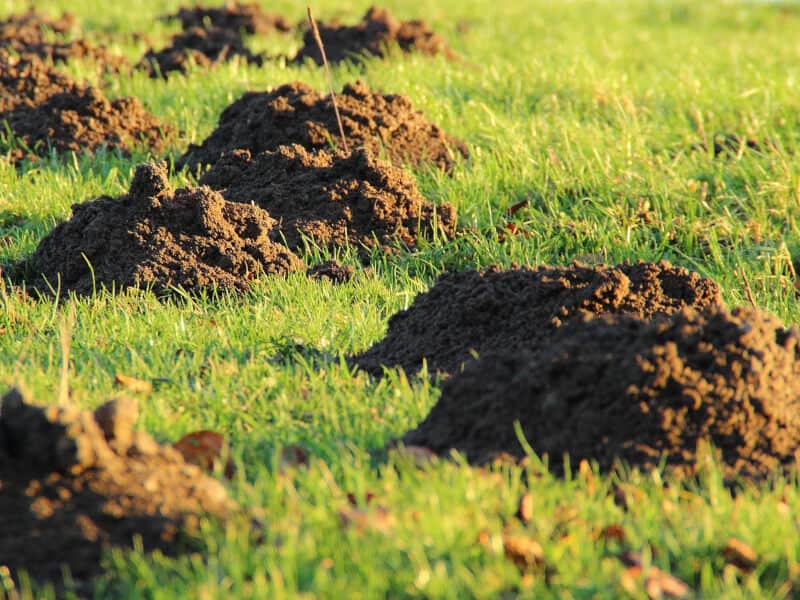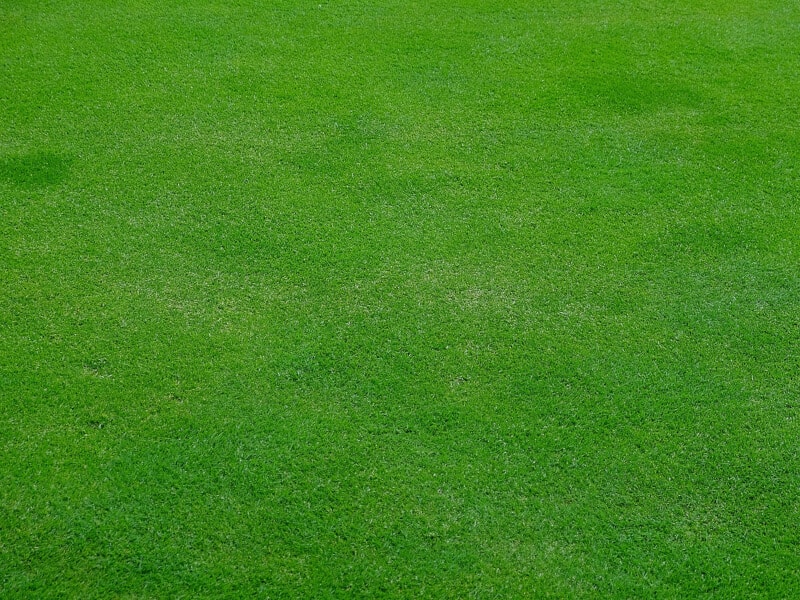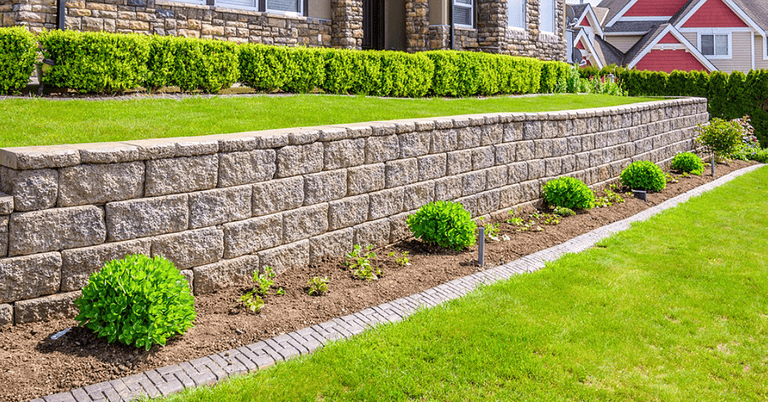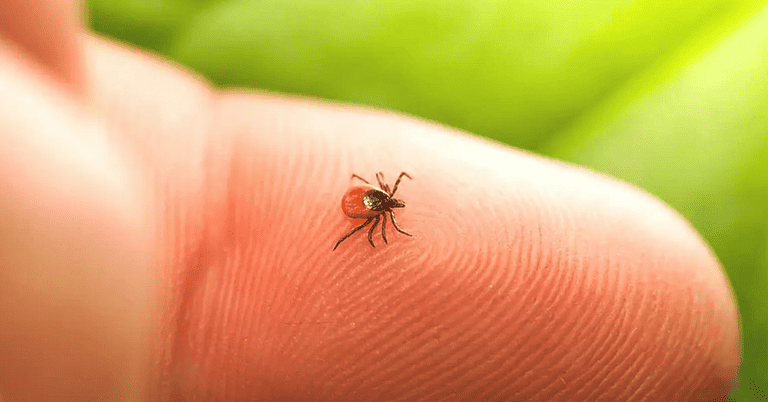What Causes Small Round Holes In Lawn
There’s nothing more taxing than waking up and finding small holes in your lush green lawn. Not only do they make your yard look awful, but they can also be very stressful to manage, especially when you know it’s not your pet dog that dug them up or your children that might have gone a little too far while playing in your lawn.
Often, these small holes are caused by a variety of reasons. The good news? They can be manageable if you identify their root cause as early as possible.
So, what could be the causes of these unwanted small round holes in your yard?

Causes of Small Round Holes
If the small holes appeared overnight, they are most likely caused by animals or pests invading your lawn. They may vary from rodents like rats or chipmunks, or insects such as bees or wasps. (Learn How To Keep Cars From Parking On My Lawn)
If you ever find yourself asking, “What animal is digging holes in my yard” check out some of the most common causes that can help you distinguish them:
- Earthworms. Worms are normally found in lawns, signifying that your yard’s soil is healthy. They usually leave a tower of soil around the 1-inch holes they create. While they can be good for your soil, too many of them can create several unwanted small holes in your lawn that make it look ugly and damaged.
- Insects. During colder months, insects tend to live in the ground and will emerge in springtime. The best examples of these would be beetles and cicadas. Once they emerge into the open air, they tend to leave small holes in the ground. Apart from these, other insects that can affect your lawn are wasps which are known to dig holes when the grass is short, and the ground is exposed.
- Rats. Holes created by rats are often found in areas near tree snags, big roots, or fences. They are usually about 3 inches wide and will show signs of rodent activity at/or near the opening, such as soil that has been thrown out of the hole just outside the area.
- Moles. Moles usually create holes to eat grubs and earthworms, although they hardly leave holes in their burrows above ground. They often build tunnels around 10 inches below the surface of your lawn.
- Voles. You will know when a vole is a culprit in the hole in your yard when there is rodent waste with chewed grass clipping near the area. Sometimes, they also leave trails of dead grass that signify voles are creating the holes.
- Gophers. Gophers are known to be vegetarians; hence, they eat roots and blades of the grass in your lawn. When you check the holes and find some grass blades inside the tunnels, gophers are most likely the cause.
- Chipmunks. Chipmunks tend to dig holes in areas they feel comfortable hiding in, like log piles and near tree stumps. They likely use these holes to hide nuts and other food or simply a place where they can stay safe.
- Birds. When you notice that birds start flocking around your yard, chances are they are looking for food in your garden. They use their beaks and claws to dig holes and locate the grubs and ants they usually eat daily.
- Snakes. While they don’t create holes, snakes usually take over holes left by moles or rats. Don’t fret, though; unless there are snakes in your area, you don’t have to worry that they might be the cause of sudden holes in your lawn.
How to Get Rid of The Causes
Identifying the root cause of the holes in the garden is just the first step in getting rid of them. Although some of them can damage your lawn, others don’t harm, such as earthworms and insects.
Once you’ve fully pointed out what has been damaging your lawn, here’s how you can efficiently deal with them:
- Clear overgrown grass and bushes. If rats cause the holes, start clearing the bushes and mowing the overgrown grass in your lawn. If there are already too many rat holes, it most likely indicates a rat infestation in your yard.
- Use repellents. Use natural repellents as much as possible to avoid ruining your lawn. Depending on which animal you are trying to repel, repellents come in different kinds:
- For rats, there are natural rat repellents available in the market that are effective in getting rid of them.
- Plants such as marigolds, shallots, daffodils, garlic, and alliums make great natural repellents for moles.
- For gophers, you can opt for castor oil pellets or peppermint oil that you can place into their burrows to repel them. Fabric softeners are good natural repellents for gophers, too!
- Remove food sources. Once you’ve removed their root cause, most holes can only be removed. For animals like birds, you need to control their food source first like the grubs and ants in your yard, before you can get rid of them.
- Make use of physical barriers. For animals often found in deep holes such as moles, you can use a chicken wire and place it underground around your lawn to stop them from coming into your yard. (Learn How Long Do Roses Last In The Fridge)

How to Fill in The Holes
Once you’ve successfully identified the cause of the holes and gotten rid of them, it’s time to fill in the holes next. If the holes are only small, you may follow this simple step-by-step process:
- Get some topsoil and place it in the hole.
- Use a shovel or your hands in placing them properly until filled.
- Press the soil down to make it firm.
- Rake the scattered soil around the lawn.
While most holes are easy to fill, big holes in the ground are often hard to address. For bigger holes, try to follow this process to fill in the holes while still keeping your lawn in good condition:
- Lift the sunken grass area with a flat shovel.
- Cut the sunken area into a one-foot square space using a shovel.
- Fill in the holes with new and clean topsoil.
- Replace the grass you lifted with brand new grass sods.
- Press it down with your foot or roller until it’s leveled out.

How to Make Your Lawn Look Good Again
Unfortunately, fixing holes can damage the grass on your lawn. But like any other plant, grass can be planted and grown beautifully. Here’s how you can do it to restore your lawn to its full glory:
- Determine what kind of grass you have on your lawn. You can easily do this by consulting with your local coop to identify the type of grass you have in your garden.
- Purchase that seed or sod. Once you’ve identified what kind of grass is in your lawn, purchase that seed at garden centers or landscape supply companies. This ensures you have the same grass species in your lawn to keep it uniform.
- Consider the condition of your lawn. Is your lawn relatively new, or is it already old? Older ones tend to be more shaded because of their trees. So, before you start seeding them, read the label first on your purchased seed to see if it suits your lawn’s environment.
- Seed by hand. Now that you have your seed, you can shake them evenly across the area. You don’t have to bury them deep; just enough to see half soil and half seed. Make sure you have covered at least 50% of the area!
- Water your seed. The key to ensuring it’s watered well is to keep the area moist, not soaking wet. You can water them at least two or three times a day. Depending on your lawn’s grass, it may take days or weeks to germinate.
Key Takeaway
Seeing your beautiful lawn slowly having small round holes is never fun, but it doesn’t mean they aren’t manageable. From here on, no more wondering what causes small round holes in the lawn – by simply keeping in mind the proper ways of identifying it, how to get rid of it, and the process of filling in the holes, you’ll surely have your lush green lawn back in no time. (Read Difference Between Topsoil And Lawn Soil)
However, if worst comes to worst, don’t be afraid to seek help from garden professionals to immediately address what could be infesting your lawn. They know what’s best for your lawn to restore it to pristine condition. The earlier you address it, the better it is for your garden in the long run!







